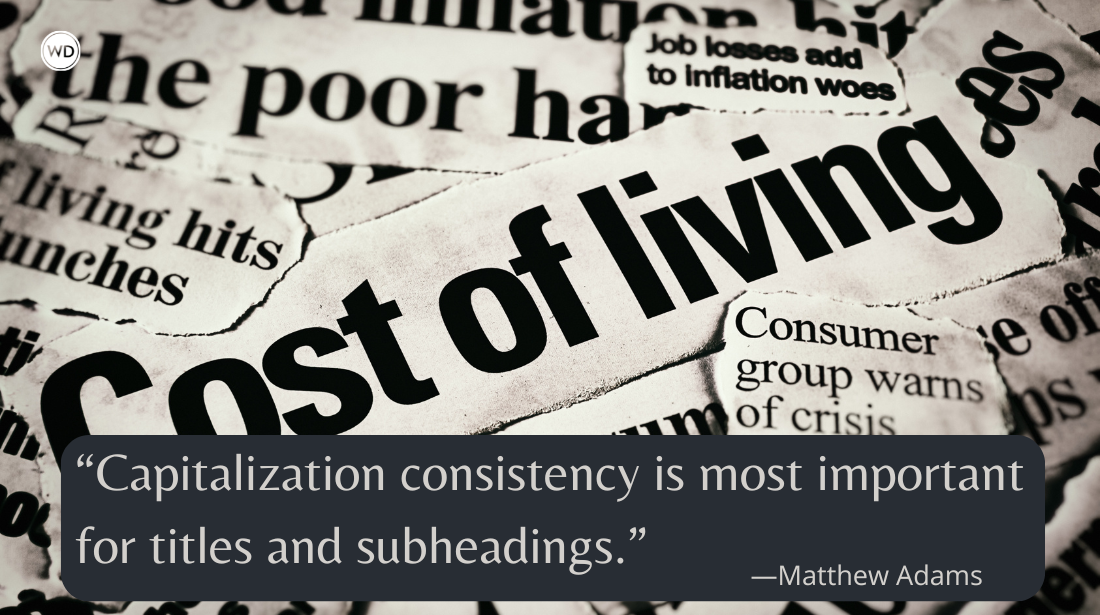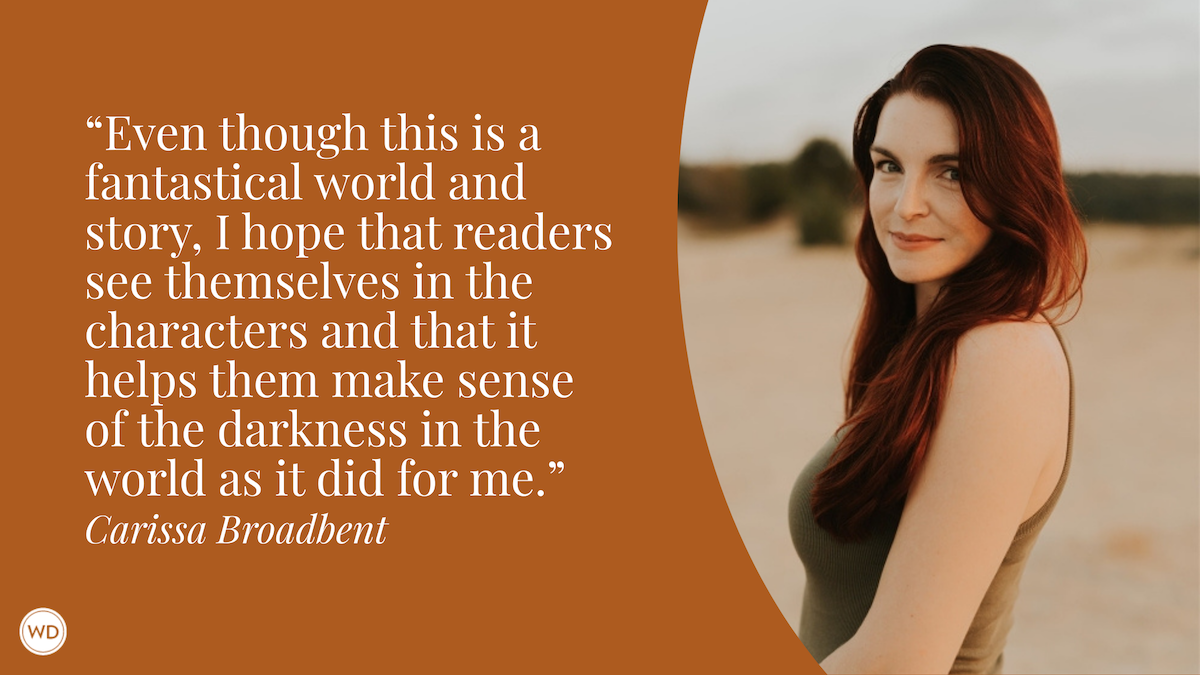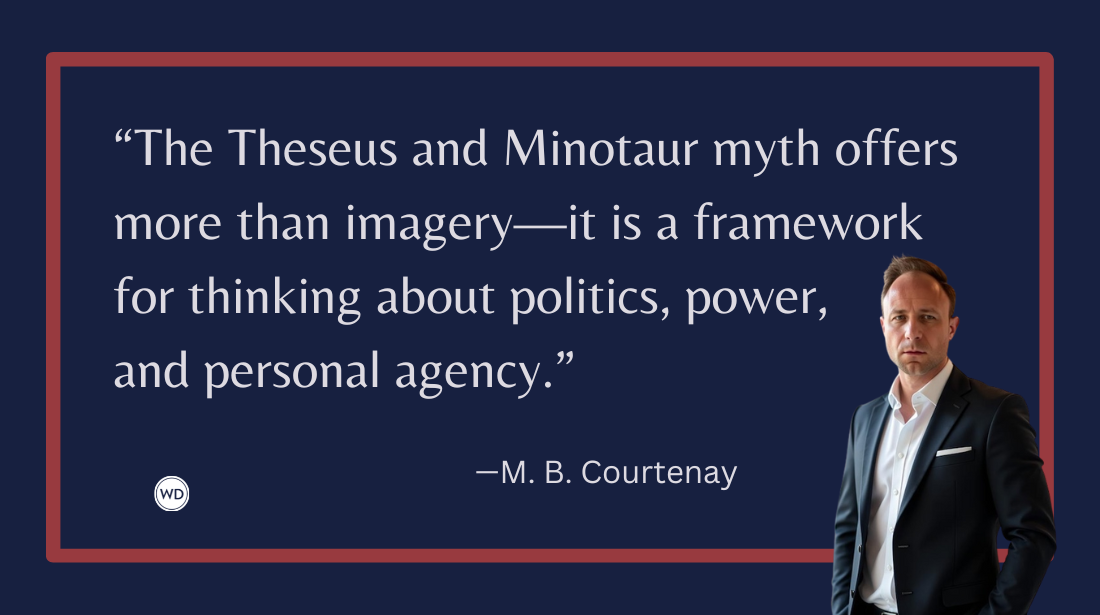How to Push Your Characters to Their Limits
How far can a character go before she’s “out of character”? Here’s how to use the interplay of context, conflict and contradiction to your story’s advantage.
Most of us at some point in our reading lives have come upon a scene where one of the characters does something so odd it doesn’t just defy expectation, it stops us cold.
We’re not pleasantly intrigued, we’re baffled—or annoyed. The dreamlike illusion we’ve enjoyed up to that point has been ruptured not in some Brechtian breach of the fourth wall, but through plain bad writing. We scratch our heads, thinking: The character just wouldn’t do that.
As writers, we don’t ever want our readers to feel that kind of disconnect—but that doesn’t mean our characters should be neatly and easily defined, either. Pushing our characters to their limits, in fact, is what makes for compelling fiction.
So how, then, can we determine the limits of what’s believable in how a character behaves?
—by David Corbett
Character in Context
In life, when someone we know acts “out of character,” the subtext is almost always: Something must be wrong. The strange behavior, we assume, must be the result of some strain of which we’re unaware.
Sometimes we learn the person has a health problem. Sometimes we learn he was under the influence. The intoxicant may be drink or drugs, the pressure of fear or the rush of love (or some other kind of rapture), but the result is the compromise of the person’s inhibitions.
In the most unsettling cases, we come to realize we don’t know the person as well as we thought. The behavior we found puzzling resulted from an aspect of personality we simply didn’t know, recognize or understand. (This kind of revelation isn’t limited to others. You may even have shocked yourself on occasion, behaving in a way that made you think: Where the heck did that come from?) One great advantage reality has over fiction is that it doesn’t have to make sense. It just happens. In the case of real people, there’s no stopping the movement of time to say: I don’t buy that.
The great challenge of fiction is creating characters who feel logically, emotionally and psychologically consistent—who make sense—but retain the enigmatic power to surprise.
It should come as no shock that the trick is to learn from real life.
Just like their real-world avatars, characters who defy our expectations are almost always either:
■ Under a strain
■ Feeling free of some customary inhibition
■ Revealing something about themselves they’ve previously concealed.
Put otherwise, the key factor in the seemingly strange behavior is normally one of the following:
■ Conflict
■ Permission
■ Deceit/Disclosure.
Conflict: I wouldn’t do this if I didn’t have to.
When the principal motivator for the unexpected act is conflict, the character enters the scene with a strong desire and a plan for achieving it, only to run smack into an equal—or overpowering—counterforce. As the character learns his plan is insufficient, ill-conceived, even ridiculous, he tosses aside this element or that—or pitches the whole thing overboard—and is forced to adapt and improvise.
The limits of what the character can do in the service of improvisation are defined first by the parameters of her mental and emotional makeup. But those parameters acquire elasticity depending on the depth of the character’s desire, the ferocity of the opposition, and the stakes.
For example, in the film Three Days of the Condor, Joseph Turner (Robert Redford) is a mild-mannered analyst. But when he returns from lunch one day to discover his co-workers murdered, he kidnaps Kathy Hale (Faye Dunaway) as he tries to find a safe place to regroup. Turner’s not “the kind of guy” who under any other circumstances would abduct a woman. But his behavior is believable because his adversaries are ruthless. He’s not acting as he might; he’s acting as he must. And the real key to the credibility of his otherwise out-of-character behavior is that he himself acknowledges the abnormality of what he’s doing.
Likewise, in Tennessee Williams’ A Streetcar Named Desire, Blanche DuBois is desperate to find not just a resting place but a home with her sister, Stella. It becomes obvious, however, that Stella’s heart and home now belong to her husband. Blanche struggles harder and harder to get Stella to come out and say it—“my home is your home”—using flattery, nostalgia, guilt, sisterly simpatico, humor, but her efforts continue to fail. Finally, there’s nothing to do but something wildly out of character; Blanche tells her sister the unvarnished truth: “You’re all I’ve got in the world.” But, being Blanche, she can’t help but add a little manipulative dig: “And you’re not glad to see me.”
These scenes work because the characters don’t improvise wildly; they start with the familiar, using tactics they know well. The level of strangeness rises in sync with their desperation as the conflicts build and those tried-and-true methods fail.
The scenes also succeed because on some level the characters express or recognize the unusualness of what they’re doing. Turner apologizes. Blanche quickly reverts to form.
Permission: As long as you say it’s OK.
Drink doesn’t just steady the nerves. It grants the drinker tacit permission to let her inhibitions down, act as she pleases and say what she feels. And the “uncharacteristic” behavior is usually something that, when the person is sober, is kept under wraps.
Returning to Streetcar: For Blanche, drink isn’t just an intoxicant, it’s an indulgent friend who assures her it’s all right: She can return to her fantasy world of romance and mystery and forget the scandalous realties that have rendered her homeless, penniless and the subject of scorn.
Looked at more broadly, the role of permission reveals how much we frame our conduct around our circumstances. Propriety, duty, conformity, habit—they limit what we believe we’re allowed to do or say. But then we go on holiday—wherever, however—and the rules of gravity no longer apply.
In the film Rachel, Rachel, Rachel Cameron (Joanne Woodward) is a middle-aged spinster in a small Connecticut town. She lives wrapped in a straightjacket of righteous conformity—until a man shows up and she falls in love. She takes her holiday right there at home, finally letting herself feel the pleasure she’s been denying herself for decades.
Here the issue isn’t adaptation in the face of present conflict. It’s exploration or discovery of a suppressed, unsettling or even dangerous side of the personality that’s been there all along, just unexpressed. But that raises the question of why it’s been unexpressed, and that often leads us to past conflict.
You won’t know how far you can push a character’s liberated feelings without exploring her backstory: Why has this side of her personality been denied? When was the last time she demonstrated it? What happened? Who in the character’s past enforced that prohibition? In answering such questions, envision a crucial scene: a self-absorbed parent ignoring a long-anticipated performance; a judgmental teacher launching into a tirade over an innocent mistake; a so-called friend mocking the latest love interest. Let that one vivid scene stand for a history of abuse, neglect or being shut down.
And when the suppressed behavior at last finds expression, keep that internal naysayer in mind. As when faced with present conflict, the character might not suddenly leap from the familiar to the unrecognizable in one reckless bound, but instead experiment, her boldness growing with her confidence. Then again, the behavior she’s kept under wraps may escape with explosive force, as though to destroy the image of that person who, for years, has been saying over and over with insidious force: no.
Deceit/Disclosure: That wasn’t really me.
Here the inexplicable conduct hasn’t been repressed—it’s been deliberately hidden. Of the three types of surprise behavior we’ve covered, this one lends itself best to a sudden, big reveal. It’s also the easiest and most straightforward to portray.
In The Scarlet Pimpernel, Marguerite St. Just is baffled by what’s become of the brave, charming man she married. Sir Percy Blakeney has become a parody of himself, playing the part of the slow-witted dandy. Ultimately Marguerite discovers the foppery is a disguise, intended to conceal Sir Percy’s role as the leader of a band of noblemen dedicated to saving the lives of aristocrats facing death under the Reign of Terror.
In Daphne du Maurier’s Rebecca, the gentile Maxim de Winter erupts in inexplicable bursts of caustic temper that take on such a menacing aspect that he seems increasingly likely to crack apart. In the story’s crucial revelation, he at last confesses why this is—his wife Rebecca’s death wasn’t an accident after all.
Once we know the puzzling behavior results from something that has been concealed, we accept it readily, unless for some other reason it feels unbelievable. The paraplegic may very well get up and dance, but if he does, it better be magic or deception at play. Anything else is just bad writing.
If I did this more often I’d be better at it.
Regardless of what’s prompting your character to reach her limits, strange behavior shouldn’t come easily. Characters who demonstrate instant skill or comfort with something they’ve never tried before reside largely in the realm of shlock. The less familiar the behavior, the clumsier and more uncomfortable it should be. Trying anything out of the ordinary means complication, difficulty, intensified focus. Portray that in your scenes, and you’ll increase tension, enhance suspense and intensify reader empathy.
The Role of Contradictions
What much of the behavior we’re discussing exemplifies is the capacity of human beings to be contradictory.
Simply stated, a contradiction is something about a person that piques our interest because it betrays what we expect, given what else we know or observe about him.
Once you train your eye to look for contradictions, they crop up virtually everywhere, expressing a paradox of human nature: that people do one thing and exactly the opposite; they’re this but they’re also that.
In Jungian psychology, this largely unexplored, contradictory aspect of the personality is referred to as the Shadow. Psychic wholeness requires integrating into the conscious personality the nebulous traits embodied in the Shadow, and a great many stories are premised on exactly that kind of self-realization.
That said, some of the contradictions that prove useful in characterization are not psychological at all, but physical: the bully’s squeaky voice, the ballerina’s chubby knees. But the most interesting contradictions always reflect something internal, even dispositional: A man is both garrulous and shy, outgoing but suspicious, brutal but childlike. Omar Little from the TV show The Wire isn’t just a shotgun-toting vigilante; he’s also an openly gay man who treats his lovers with startling affection and tenderness. The effect: We never know which half of the personality will assert itself in any given situation. That’s suspense—the best kind.
Some contradictions are behavioral: We feel divided—optimistic and yet wary, accepting and yet guarded. Other contradictions reflect the need to act properly in a variety of contrasting social situations: the dinner table, the office, the stadium, the chapel, the bedroom. We feel differing degrees of freedom to “be ourselves” in each of these environments, depending on who else is present.
Beyond purposes of verisimilitude, contradictions serve two key dramatic purposes:
■ They defy expectation and thus pique our interest.
■ They provide a straightforward method for depicting complexity and depth. Specifically, they provide a means to portray:
• Subtext (the tension between the expressed and the unexpressed, the visible and the concealed)
• The situational subtleties of social life (“I must be many things to many people”)
• The conflict between conscious and unconscious behavior
• Suspense (we want to know what the contradiction means, why it’s there).
But again, there are limits to what is credible. Contradictions that seem implausible may enhance a
comedic portrayal—the mob boss with the Yorkie, the cop who’s terrified of cats, the chain-smoking nun—but they can undermine a dramatic one if handled carelessly. Ask whether the contradiction draws you, the writer, toward the character, or permits you an emotional distance. If the latter, you’re “looking at” the character rather than emotionally engaging with her, and the characteristic you’re considering is likely not working. If you can justify the contradiction, root it in backstory and unearth scenes from your imagination that reveal how this character developed these seemingly irreconcilable inclinations, it will become less conceptual, more intuitive and organic.
Emotion, Intuition & Trust
The temptation when writing scenes in which characters do the unexpected is to stop and explain what just happened. Many writers think, not without some merit, that to leave things incomplete, ambiguous or untidy is just sloppiness. Though there’s much to admire in this sort of rigor, in the realm of characterization it’s sadly misplaced.
Where rigor is necessary is in how vividly, creatively and comprehensively we conceive our characters. We don’t get to know someone new through a recitation of biological data; we get to know her through interacting with her—especially during emotional or demanding times. So, too, we get to know a character by engaging with her in meaningful scenes that reveal the most significant aspects of her life: her wants and contradictions and secrets and wounds, her attachment to friends and family and her fear of her enemies, her schooling and sense of home, her loves and hatreds, her shame and pride and guilt and sense of joy. As important as a character’s choices and motivations are in any scene—what she does and why—they don’t exist in a vacuum.
This way of understanding the character—relying on emotionally significant scenes, not information—allows us to engage with the character on the level of intuition, not intellect. This permits us to envision our characters clearly and feel as though we’re in dialogue with them, observing them as we observe a dream—not controlling them like marionettes. And it’s precisely “plot puppets” that most routinely exhibit traits that feel “out of character.”
Readers shouldn’t be vexed by a character’s behavior, but they should never feel entirely comfortable, either, or they’ll be several steps ahead of the story at every turn.
Explaining your character kills her. Whatever she does, the reader or audience needs to feel her actions arise not from some single, explainable source, but from the whole of her personality. And the deeper you understand that whole, the more likely you’ll be able to portray convincingly the unexpected in her behavior.
So where is that fine line between being puzzled by behavior and finding it contrived? The answer lies in letting the behavior emerge from the character, not the writer. We need to create enough of a vivid intuition of a character that the possibility for real, unpredictable, unpremeditated action on the character’s part seems credible. And this requires envisioning the character in emotionally demanding scenes, filled with conflict, pathos and risk. In the end, it’s not so much a question of how far the character will go, but how thoroughly you’re willing to connect with her.
************
Follow me on Twitter: @BrianKlems
Check out my humor book, Oh Boy, You're Having a Girl.
Sign up for my free weekly eNewsletter: WD Newsletter









